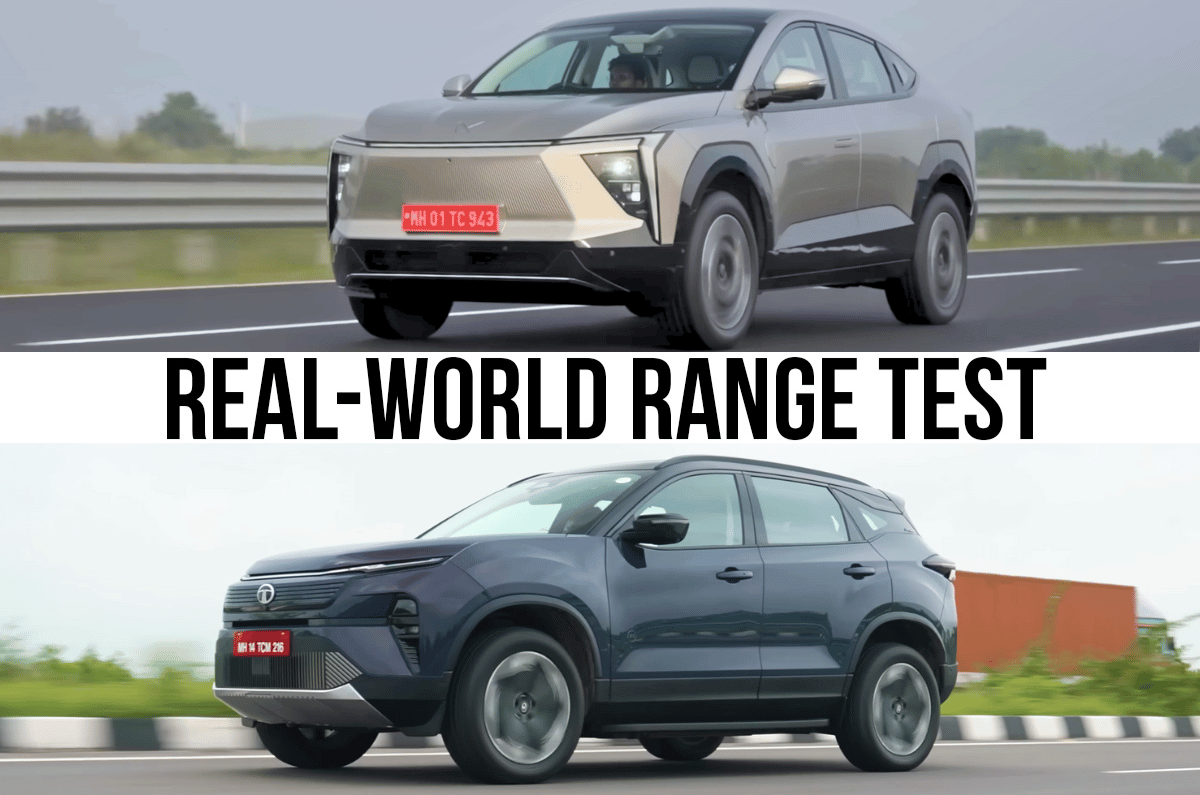Tata Harrier EV vs Mahindra XEV 9 real world range comparison

Both the Tata Harrier EV and Mahindra XEV 9e are flagship electric SUV models of their respective brands. These five-seaters are closely priced as well, but the real question is which of them delivers more range in real-world conditions. To find out just that, we have compared the top models of the Tata and Mahindra pair.
Tata Harrier EV vs Mahindra XEV 9e prices
Harrier EV is more affordable by Rs 1.5 lakh-2 lakh
| Tata Harrier EV vs Mahindra XEV 9e top model prices | |||
|---|---|---|---|
| Variant | Tata Harrier EV price (Rs, lakh) | Variant | Mahindra XEV 9e price (Rs, lakh) |
| Empowered AWD | 28.99 | Pack Three | 30.50 |
| Empowered AWD + 7.2kW AC charger | 29.48 | Pack Three + 7.2kW AC charger | 31 |
| - | - | Pack Three + 11.2kW AC charger | 31.25 |
Tata Harrier EV vs Mahindra XEV 9e specs
XEV 9e is RWD, while the Harrier EV gets an AWD setup
The Tata Harrier EV and Mahindra XEV 9e trade blows in different areas - the Harrier's dual-motor setup makes a relatively superior horsepower figure, and it's also quicker to hit 100kph from rest. The Mahindra, though, features a slightly larger battery pack, and its rear-wheel drive only layout, along with lesser power output, helps in giving it more range (claimed). Additionally, the Mahindra SUV is faster to charge with a DC charger due to its higher charging speed compatibility; the Tata has a quicker AC charging time.
Tata Harrier EV vs Mahindra XEV 9e real world range
XEV 9e has superior city and highway ranges

Our tests put the electric Harrier's combined real-world range at about 401km - city 409km, highway 393km, while the XEV 9e managed 456km combined - city 425km, highway 488km. That's about a 55km advantage to the Mahindra overall; the city gap is small at 16km, but the same on the highway stretches to 95km.
Autocar India's range testing protocol
For our real-world range test for each car, we began with the battery fully charged and tyre pressures set as per the manufacturer's recommendation. The cars were driven on a fixed loop covering both city and highway stretches, while maintaining set average speeds. Range was then calculated based on the percentage of charge consumed. The AC was kept at 22degC in auto mode, and other features like the music system, lights and ventilated seats were used whenever needed, just as a regular user would. This way, these tests are consistent and give a clear idea of what to expect in daily use.
Also see:
Top 5 highest mileage cars in India
7 things to know before buying a Honda City
from Autocar India https://ift.tt/coYLqiE
Comments
Post a Comment